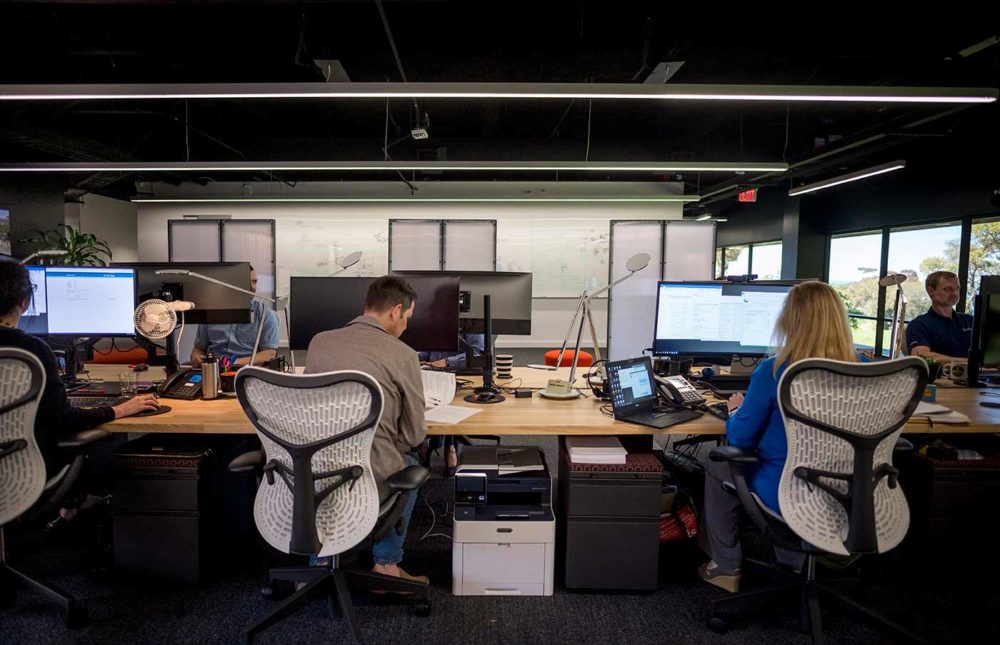By Mark Hersberger.
The University of California San Diego was collecting test scores and other learning metrics from 3.4 million students engaged in its offering of 90 massive, open, online courses (MOOCs). However, due to incompatibilities between the data format and campus analytics applications, the university had no effective way of using the data to improve courses and learning outcomes. Diving into the issue, UC San Diego’s IT Services, along with industry partners Arbisoft and Amass, found a workable solution.
The result is the Open edX Caliper Feed, a significant addition to the Open edX platform that allows real-time collection of course activity to flow into analytics tools, which can then be used to more effectively design classes and boost student success.
Open edX is the scalable learning platform that powers high-quality courses to a global audience of learners. As an open-source software package, hundreds of universities use Open edX to deliver their MOOCs worldwide, including UC San Diego. The Open edX Caliper Feed utilizes the Caliper Analytics® open standard from IMS Global Learning Consortium. Caliper Analytics provides a standard format for capturing and presenting measures of learning activity.
“The development of the Caliper Feed extends UC San Diego’s leadership in the field of big data and data science,” said Vince Kellen, UC San Diego chief information officer. “It is a significant addition to the Open edX platform that enables UC San Diego and other universities to quickly organize, examine and act upon learning big data in their teaching and learning environments.”
The Feed in Action
UC San Diego’s Teaching + Learning Commons, which manages the university’s Digital Learning Hub, will use the Open edX Caliper Feed with the goal of revolutionizing its online learning experience and ensuring student success.
“This is going to be huge. It’s a tremendous development,” said Karen Flammer, director of the Center for Digital Learning. “Currently, it’s not easy to see what parts of a course students are spending time on, what they are concentrating on and where they are struggling. From a practical standpoint, we’ll be able to use this data to assess and improve learning pathways.”
Specific, student-centered improvements are at the heart of how the Teaching + Learning Commons will use the Caliper Feed. Access to real-time reporting helps instructors and course designers chart effective learning pathways. For example, some students react better to auditory content, while others prefer visual methods.
Actionable data indicates how students learn and progress, which leads to differentiated experiences based on an individual’s pathway. Flammer explained that, currently, she doesn’t know if students watch a video or not, or take a practice quiz one time or 100 times.
“With this data, we can perform research on how people learn in different ways,” she said. “It will help us evaluate how content is designed. There’s not one right answer, but at least we’ll be able to see the different pathways.”
Understanding those pathways directly supports the concepts of both authentic and adaptive learning, which will be enhanced by data transmitted from the feed. Authentic learning is an instructional approach based on providing real-world examples and simulations. Access to quality student data leads to improved simulations and exercises. “The end goal is to make the course less abstract and more meaningful and applicable,” added Flammer.
Adaptive learning uses data to create customized student experiences. For example, students who immediately master a topic quickly advance to the next stage. Meanwhile, those struggling – for example, not passing quizzes – are served more materials or extra practice problems. According to Flammer, “Obtaining access to this data supports delivering customized resources and activities tailored to the unique needs of each learner.”
The complete code – the first of its kind – is available for free to the entire Open edX community.
IT Services is UC San Diego’s central IT organization, offering data and analytics services to assist students and faculty to improve their teaching and learning capabilities in the digital age.
This article originally appeared in the UC San Diego Newscenter, March 26, 2019 and is re-posted with permission in the UC IT Blog.
 Mark Hersberger is communications and outreach manager, Information Technology Services, UC San Diego.
Mark Hersberger is communications and outreach manager, Information Technology Services, UC San Diego.

